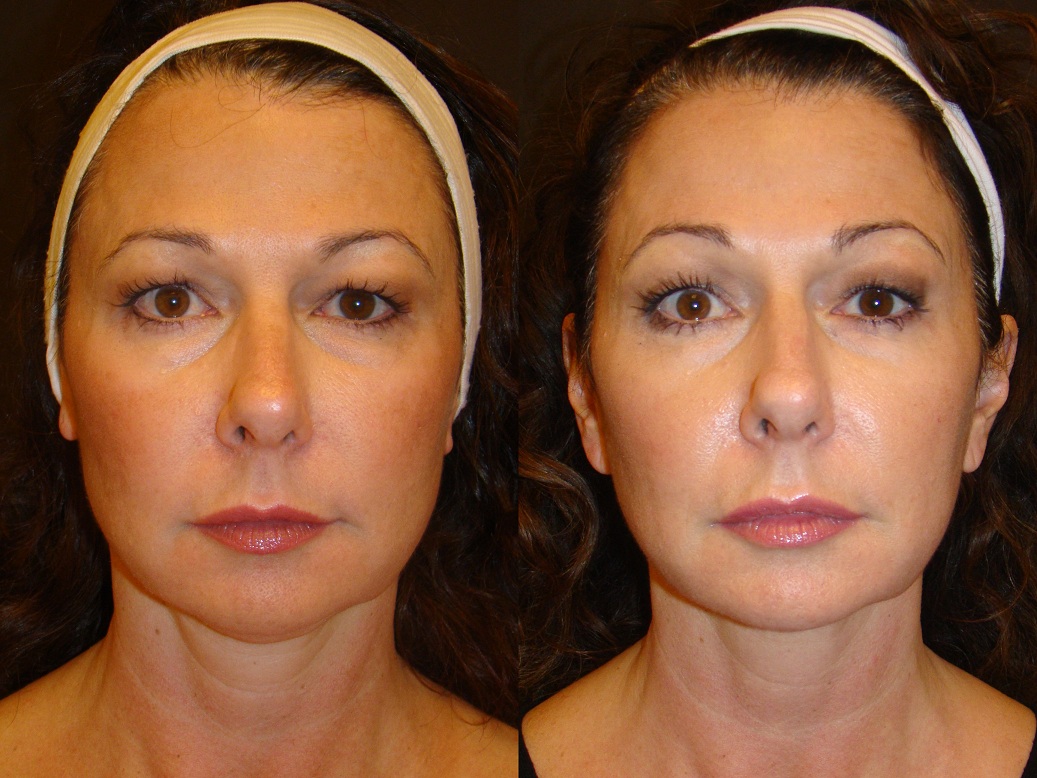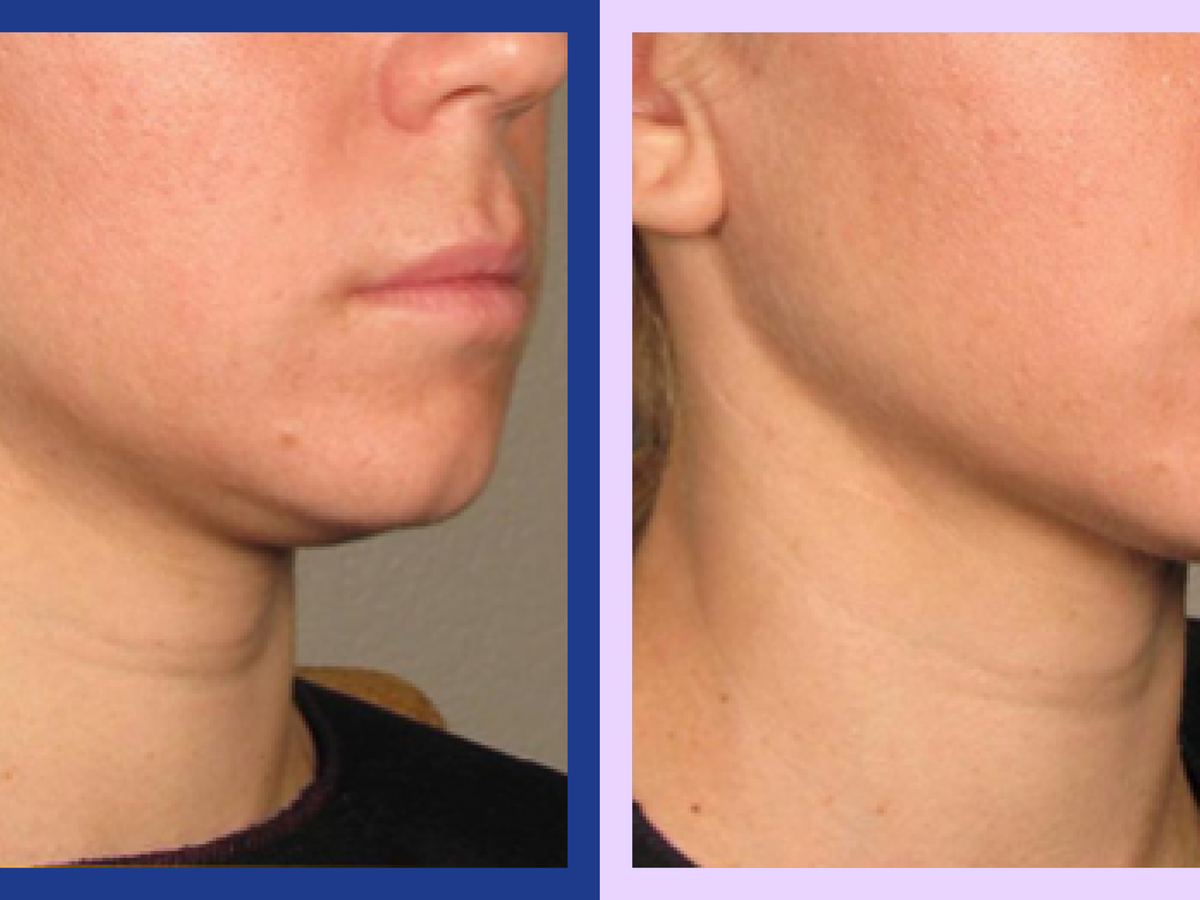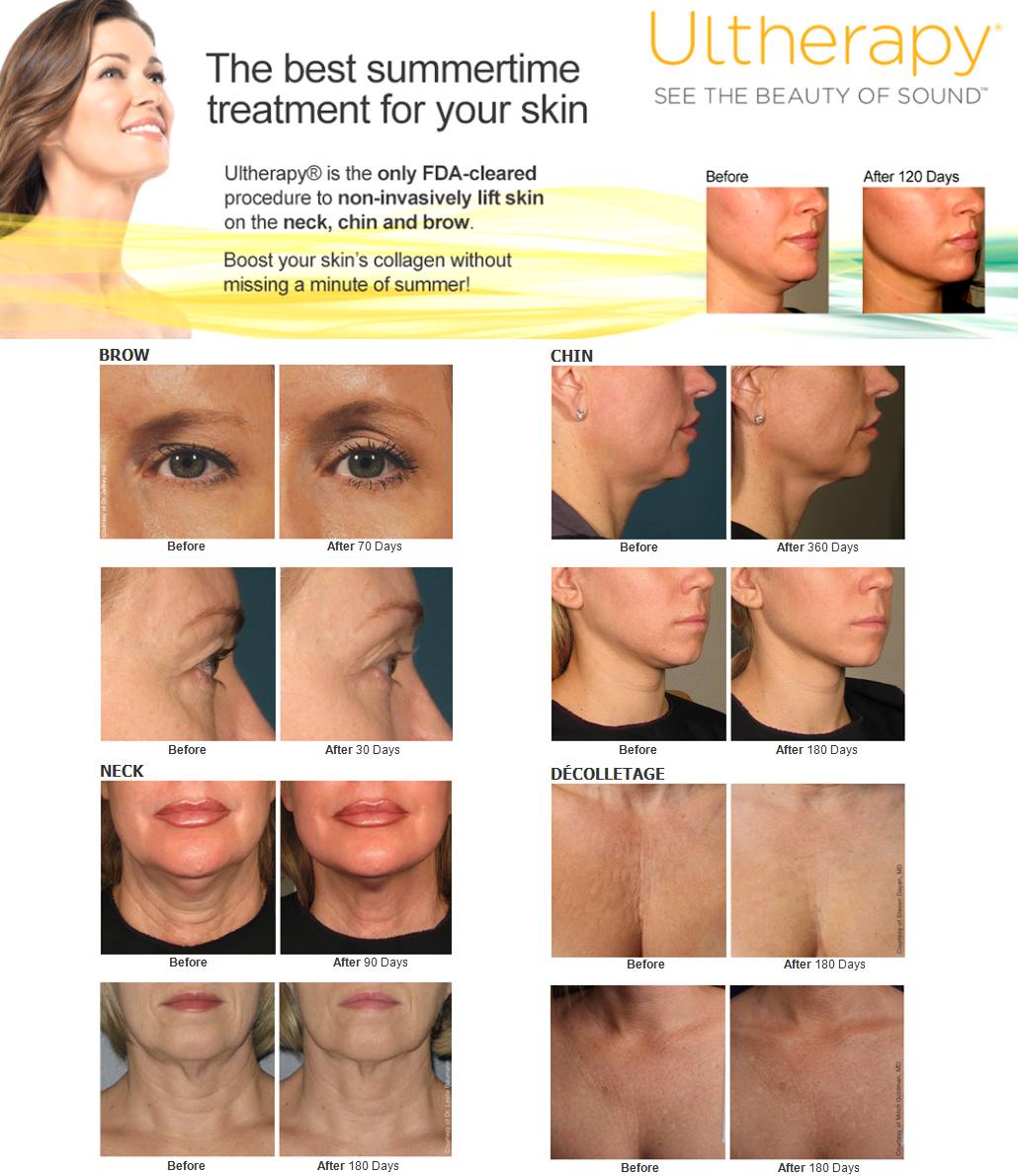Key Benefits to Consider Skin tightening treatment KL for Facial Rejuvenation
Why Ultherapy May Be Medically Necessary: Checking Out the Reasons for a Non Surgical Lift
Ultherapy is gaining focus as a sensible choice for individuals facing skin laxity as a result of aging or specific clinical conditions. This non-surgical therapy stimulates collagen manufacturing, providing a solution that stays clear of the recovery time associated with intrusive procedures. As individuals look for to improve not just their look but additionally their total skin wellness, recognizing the conditions that require Ultherapy's usage becomes vital. What elements add to its medical necessity?
Understanding Ultherapy: What It Is and Exactly how It Functions
Ultherapy, a non-invasive cosmetic procedure, uses ultrasound modern technology to boost collagen production and promote skin firm. By providing focused ultrasound power deep into the skin, it targets the foundational layers generally attended to in medical renovations. This process motivates the body's natural recovery reaction, leading to gradual training and firm of the skin over time.

Treatment sessions typically last between 30 to 90 mins, depending on the size of the location being dealt with. While outcomes may not be promptly visible, suitable effects typically show up within two to three months as collagen remains to develop. Ultherapy deals an engaging non-surgical option for people looking for skin rejuvenation without the requirement for intrusive procedures.
The Aging Process: Results on Skin Elasticity and Collagen
Aging certainly brings changes that reduce skin flexibility and collagen production, resulting in noticeable indicators of sagging and wrinkles. As individuals age, the skin's capacity to keep wetness declines, resulting in a drier and less durable surface. Collagen, a crucial healthy protein in charge of skin framework, also diminishes, causing the skin to lose its firmness and younger look. Variables such as sun exposure, toxic wastes, and way of living options additionally increase this decrease in skin top quality.
This loss of flexibility and collagen develops a waterfall of adjustments, consisting of the formation of jowls, strengthening nasolabial folds, and a total sagging appearance. The skin's support group deteriorates, making it a lot more prone to the impacts of gravity. As a result, many individuals look for treatments like Ultherapy to combat these aging effects, aiming to bring back a more youthful, taut look without the demand for intrusive operations.
Clinical Problems That May Gain From Ultherapy
Ultherapy is progressively acknowledged for its potential advantages in dealing with numerous medical problems. Individuals experiencing skin laxity, those in post-surgical recuperation, and clients with persistent skin disease might discover this non-invasive treatment helpful. By stimulating collagen manufacturing, Ultherapy can enhance skin firmness and boost general look for these groups.
Skin Laxity Problems
Skin laxity can be a significant worry for individuals experiencing different medical conditions that influence the integrity and elasticity of their skin. Problems such as Ehlers-Danlos syndrome, which interrupts collagen manufacturing, can lead to premature skin aging and sagging. Additionally, individuals with autoimmune conditions may experience skin modifications that add to laxity. Hormonal changes, particularly during menopause, additionally play a role in reducing skin suppleness. Ultherapy, utilizing ultrasound innovation, targets the much deeper layers of skin, boosting collagen production and tightening up the impacted areas. This non-invasive treatment may use a practical option for those looking for to address skin laxity resulting from these clinical conditions, enhancing both appearance and self-confidence without the requirement for medical treatment.
Post-Surgical Recuperation Aid
Post-surgical recovery can typically existing obstacles, specifically for people experiencing skin laxity due to surgical interventions. Ultherapy functions as a prospective aid in this circumstance, using ultrasound innovation to promote collagen production and enhance skin rigidity without intrusive procedures. Patients who have undergone surgeries such as facelifts, lipo, or various other body contouring treatments might locate that Ultherapy boosts their recovery by dealing with uneven texture and laxity that can occur post-operation. This non-surgical approach can lead to boosted visual results, potentially decreasing the need for added medical treatments. Moreover, it may help alleviate discomfort associated with the recovery procedure, offering clients a more all-encompassing recuperation experience. As a result, Ultherapy can be an important option in post-surgical treatment.
Persistent Skin Disease
For people struggling with chronic skin disease such as acne scars, rosacea, or laxity due to aging, non-invasive treatments might offer substantial relief and renovation. Ultherapy has arised as a promising option, making use of ultrasound innovation to promote collagen production deep within the skin. This procedure can boost skin texture and flexibility, resolving problems like irregular skin tone and sagging. Specifically, those with rosacea might experience decreased redness and inflammation, while people with acne scars can profit from improved skin level of smoothness and total appearance. Notably, Ultherapy provides a non-surgical option that decreases recuperation time and risks related to intrusive procedures, making it an attractive selection for individuals seeking reliable monitoring of chronic skin problems.
Emotional Impact of Drooping Skin and Visual Concerns
The emotional toll of aging usually manifests in the type of drooping skin, which can greatly affect an individual's self-worth and total psychological wellness. Many individuals associate youthful appearances with energy and good looks, leading to feelings of inadequacy when faced with visible indicators of aging. This perceived decline in beauty can result in social stress and anxiety, withdrawal from social interactions, and a boosted fixation with one's look.
People might really feel forced to look for visual therapies to combat these concerns, as the desire to maintain a discover this info here youthful appearance can become linked with individuality. The emotional impacts of sagging skin may additionally bring about clinical depression or a diminished lifestyle. Consequently, non-surgical alternatives like Ultherapy arise as prospective remedies, aiming not only to rejuvenate the skin but additionally to recover self-confidence and a positive self-image, ultimately addressing the much deeper psychological ramifications of aging.
Contrasting Ultherapy to Conventional Surgical Options
When comparing Ultherapy to typical surgical options, substantial differences emerge in both cost-effectiveness and recuperation time. Ultherapy deals a non-invasive method that frequently causes lower expenses and very little downtime for clients. On the other hand, surgical lifts typically call for more financial investment and an extensive healing duration.
Cost-Effectiveness of Ultherapy

Although typical surgical lifts usually include substantial upfront prices and extended healing times, Ultherapy offers an engaging choice that can provide equivalent results at a fraction of the rate. The average expense of a medical renovation can range from $7,000 to $15,000, while Ultherapy therapies typically fall between $2,000 and $4,500, relying on the location dealt with and supplier proficiency. Furthermore, the absence of considerable pre-operative analyses and post-operative care connected with Ultherapy better adds to its cost-effectiveness. This method not only lessens monetary stress yet also permits people to purchase various other facets of their health and wellness and health. This way, Ultherapy becomes a monetarily sensible option for those seeking face renewal without the burdens of conventional surgical procedure.
Healing Time Contrast
Healing time is a considerable aspect in the decision-making process for those thinking about cosmetic procedures. Ultherapy stands apart as a non-surgical choice that commonly requires minimal downtime. Many individuals can go back to their daily tasks nearly promptly, experiencing only moderate redness or swelling that generally solves within a few hours. In comparison, traditional surgical alternatives, such as facelifts, frequently necessitate an extensive recuperation period. Clients might face a number of weeks of swelling, wounding, and restricted activity, with some going back to typical regimens taking up to 3 months. This raw distinction in recovery time makes Ultherapy an enticing option for people looking for effective outcomes without the considerable aftercare related to surgery, enabling a smoother adjustment back to day-to-day life.
The Long-Term Advantages of Non-Invasive Treatments for Skin Health And Wellness
As individuals progressively seek choices to procedures, the lasting benefits of non-invasive therapies for skin health and wellness end up being more evident. Therapies such as Ultherapy, chemical peels, and laser therapy deal significant benefits without the need for substantial recuperation times related to surgical procedure. Skin tightening treatment KL. Over time, these non-invasive choices can promote collagen manufacturing, leading to stronger skin and a more youthful look
In addition, regular non-invasive therapies can improve skin structure, tone, and flexibility, improving total skin health and wellness. People often experience less problems and adverse effects, making these procedures more appealing.
Furthermore, Look At This the advancing impacts of regular therapies can sustain and prolong aesthetic enhancements, permitting people to keep their desired look with minimal downtime. By focusing on non-invasive approaches, people can attain lasting outcomes while prioritizing their health and well-being. Ultimately, the long-term advantages of such strategies emphasize their expanding appeal in modern-day skin care.
Often Asked Concerns

The length of time Does an Ultherapy Session Typically Take?
An Ultherapy session normally lasts in between 30 to 90 mins, depending on the treatment area. Variables such as the individual's particular requirements and the level of the procedure can influence the general period.

Are There Any Kind Of Adverse Effects Connected With Ultherapy?
Ultherapy can bring about adverse effects such as temporary soreness, swelling, or tenderness in the cured area - Ultherapy Malaysia. While a lot of people experience minimal pain, it is critical to speak with a specialist for individualized advice and prospective reactions
How Soon Can I See Outcomes After Treatment?
Outcomes from Ultherapy typically begin to appear within two to three months post-treatment. The full results may remain Go Here to create over six months as collagen production rises, leading to noticeable training and tightening of the skin.
Is Ultherapy Suitable for All Skin Types?
Ultherapy is typically suitable for different skin kinds, consisting of lighter and darker tones. Individual skin conditions and worries may influence its effectiveness, making examinations with a certified specialist essential for tailored recommendations.
How Typically Should Ultherapy Treatments Be Duplicated?
Ultherapy therapies are normally advised every 6 to twelve month, relying on private skin problem and preferred results. Regular evaluations by a certified expert can aid establish the very best frequency for maintenance and efficiency.